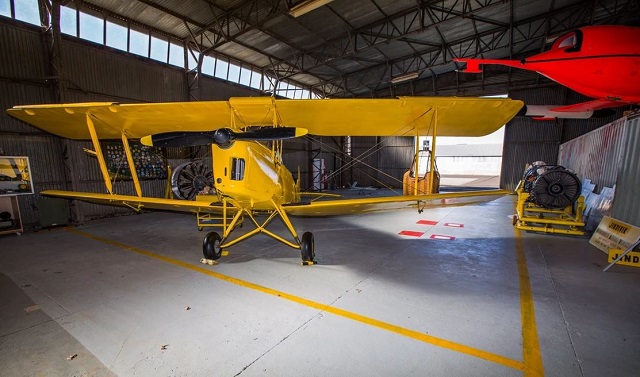Benalla Aviation Museum


The Benalla Aviation Museum is bringing to life one of the important histories surrounding the training of RAAF Pilots during the World War II conflict, stationed at the Benalla Airfield and operated as 11 EFTS Squadron.
The Benalla Aviation Museum has as its major goal to have Aircraft directly associated with RAAF training aircraft of yesteryear.
We are seeking to expand our memorabilia and static aircraft displays. We are currently rebuilding a Tiger Moth, an exciting venture. We are also working on a Vampire Jet for static display.
History of No. 11 Elementary Flying Training School (EFTS), RAAF Benalla
In the late 1930's most nations were still struggling with the effects of the Great Depression. Australia was no exception, and when the Second World War began, our Defence Forces were almost non-existent, and hopelessly unprepared.
Major recruiting programmes were immediately put into place across the Commonwealth, and the Empire Air Training Scheme was initiated which included Australia, Canada, New Zealand and South Africa. Here in Australia our participation was set up as the Elementary Flying Training School scheme. Twelve of these schools were eventually established, with the eleventh being based here in Benalla.
Formed on June 26th, 1941, No. 11 EFTS went on to become one of the most successful, with 2,953 young men passing through the school.
Each intake consisted of about 60 trainees with many of these young men never having seen an aircraft before. To reduce the congestion in the main Benalla airfield circuit area, three satellite landing fields were established at Winton, Goorambat and Devenish.
Radio communication was non-existent in training aircraft of the day with take off and landing approval usually being given by signalling lamps from a control tower or van.
Taxiing mishaps, heavy landings and air space incidents were considered normal hazards of war time training programmes, and during the four years of No. 11 EFTS flying activities at Benalla, four students and four instructors were killed in aircraft accidents.
Each of the Benalla courses ran for 8 weeks with the majority of students going "solo" after 10-15 hours dual instruction. By the end of the training programme most had accumulated a total of about 60 hours flying time, and successful graduates then went on to the next level of their pilot training with Service Flying Training Schools (SFTS) which operated the more advanced Wirraway and twin engine Avro Anson aircraft.
Eighty Tiger Moth aircraft were in use towards the end of the training programme, and these were usually housed and serviced in eight "Bellman" hangars. Of these, the only one left standing is our current museum building.
Of the 120 buildings that were eventually erected on the former Air Force base, today only two remain on their original sites.
At the start of the war the RAAF had only 3,489 personnel, and 246 aircraft, most of them obsolete. By August 1945 when the Pacific War ended, our Air Force had become the fourth largest in the world operating over 8,000 aircraft, and a combined staff of 216,000 men and women in uniform.
Opening Hours:
Opening Times
Cost:
Entry Price
Location
Samaria Road, Benalla 3672 Map
✆ (03) 5766 2455
Email Enquiry
Web Links
→ www.benallaaviationmuseum.org.au
→ Benalla Aviation Museum on Facebook
→ Military History Trail











